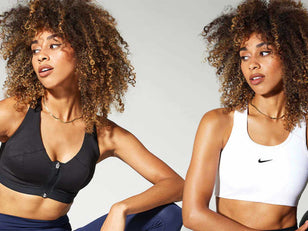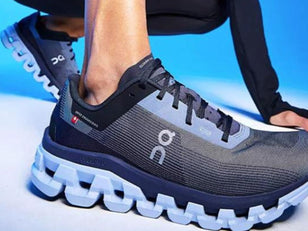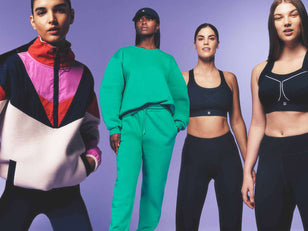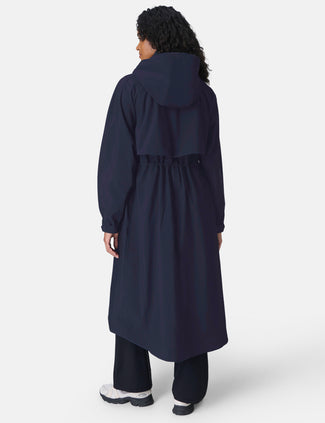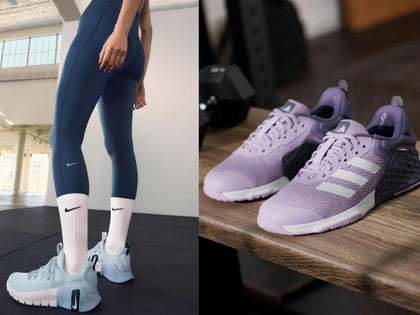Words by Linia Patel
Your best friend insists on eating everything raw. Your gym buddy is loading up on chicken and whey protein to build muscle. Your dad swears the glass of red wine he drinks every day keeps his heart in tip-top condition.
From your office colleague to the team leader at your running club everyone has an opinion on what makes a good diet. Couple this with the stream of food related headlines and instagram posts touting the latest superfood and supplements, and separating fact from fiction can be a challenge.
So where you do start? I’ve debunked the top eight nutrition myths to help cut through some of the confusion.
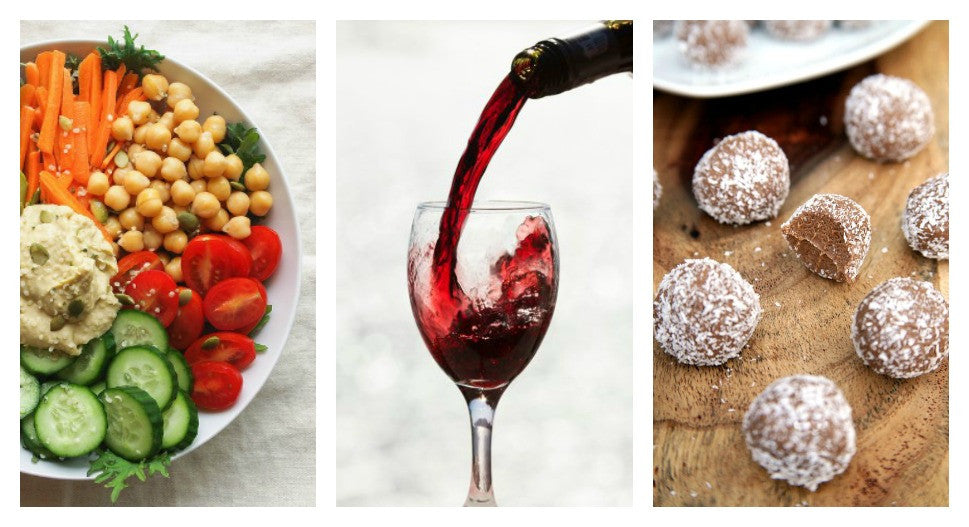
1. A VEGAN IS HEALTHIER THAN SOMEONE WHO EATS MEAT
There are numerous research-proven health benefits to following a vegan diet, but only if you’re doing it properly and not substituting animal protein with processed or high-fat (yet on-trend!) vegan products.
You will not necessarily be healthier simply from eating vegan foods. In fact, in terms of micronutrients, a vegan diet is actually more susceptible to being nutritionally poor. A vegan diet is naturally low in calcium, vitamin D, iron, vitamin B12, zinc and omega-3 fatty acids.
Therefore, if you follow a vegan diet it is essential that you get enough of these nutrients through specific vegan food sources – and may even need to take additional supplements.

2. EATING EXTRA PROTEIN BUILDS MORE MUSCLE
To build muscle, you must have three key components: adequate calories, a good intake of protein and a well-balanced strength program. Without enough calories, some of the dietary protein will be used as an energy source. Likewise, more protein than your body needs will either be stored as fat or burned for energy.
People who do strength training do have higher protein requirements (1.5 – 2.0g/kg BW per day) than people who do endurance sport (1.2 – 1.8g/kg BW per day), who have slightly higher requirements than the general sedentary population (0.8 – 1.0g/kg BW per day). However eating more than 2.0 is not going to have any additional benefits on muscle mass. All you get is more calories on board at the expense of losing out on other important nutrients.
To optimise your muscle mass gains you need to get the timing and amount of protein around your training right. Studies show that the addition of 15 – 25g of protein to a post-workout meal or snack can boost glycogen storage, reduce muscle soreness and promote protein synthesis (i.e. protein rebuilding). If you are training at a high intensity you may benefit from a recovery snack that contain protein.

3. EATING LATE AT NIGHT WILL MAKE YOU FAT
There is no magic hour in which your body decides that incoming calories must be stored as fat. It doesn’t matter what time you eat however, what does matter is what you eat.
For many, dinner has become the biggest meal of the day. If you routinely overindulging on foods that make your blood sugar levels surge ( such as refined carbs or even large portions of good carbs) then it is likely to result in fat gain.
For some people, the “no calories after 8 p.m.” rule is an effective diet strategy for them because it means they take in fewer calories over the course of a day. Although fat loss is about the overall calorie balance across the day it is all too easy to consume the entire bag, carton, or container of your favourite food before you realise it.
To keep from overeating eat mindfully and choose a portion-controlled snacks if you like your evening snacks.
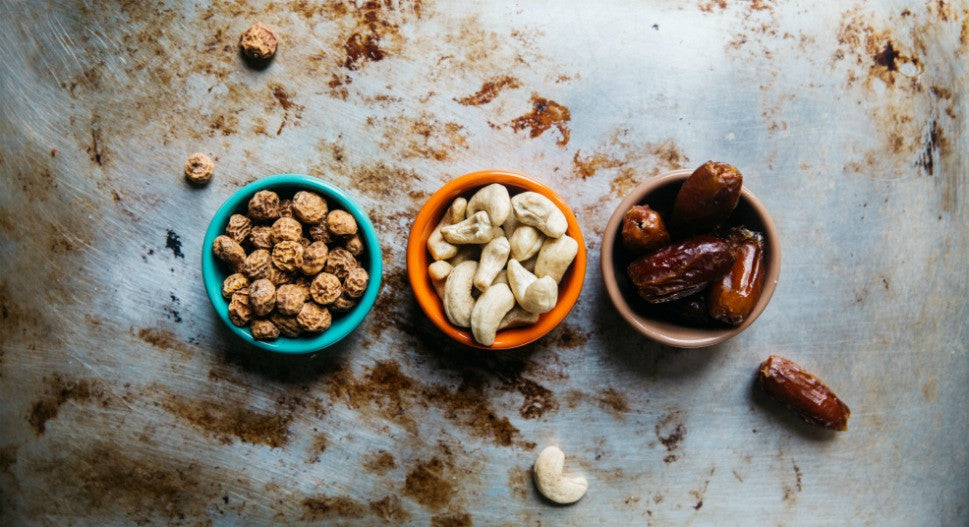
4. YOU CRAVE CERTAIN FOODS BECAUSE YOUR BODY NEEDS THEIR NUTRIENTS
If this were true, more people would be craving water (essential to life!) and vegetables and fruits (your best source of vitamins and minerals). Rather people tend to have cravings for foods like chocolate or crisps. Research has shown that cravings are more likely to be a message from your brain about how you’re feeling, than your stomach saying its hungry or that you have a specific nutrient need.
There are some physiological conditions like Type 2 Diabetes, which may find you craving carbs and sugary food if you blood sugar levels are not well controlled. Similarly, some women experience more cravings around their menstrual cycles as a result of shifting or surging hormones.
If you do have a craving, the advice is to try select a healthy alternative first. For example if you have a chocolate craving try go for a piece of dark chocolate instead. Alternatively fancy something salty? Try snack on some olives or carrots and hummus.

5. VEGETABLE OILS ARE GOOD FOR YOU
Vegetable oils are oils that have been extracted from various seeds. The most common include rapeseed (canola oil), soybean, corn, sunflower, safflower, peanut, etc.
Vegetable oils are bad because they contain very high levels of polyunsaturated fats (PUFAs). Polyunsaturated fats are highly unstable. They oxidize easily, particularly if used when cooking at high temperatures. These oxidized fats cause inflammation and mutation in cells, which increase your risk of cancer and heart disease for example.

6. RED WINE IS GOOD FOR YOUR HEART
There’s been a lot of excitement about compounds found in red wine (resveratrol) being good for you. The theory began with an observation that French people have a relatively low incidence of coronary heart disease, despite a diet relatively high in saturated fat.
Some animal studies have shown that resveratrol is linked to a longer life and has anti-cancer effects on cells in the lab. The truth for humans however is less clear-cut. The French paradox may involve several factors including patterns of alcohol consumption as well differences in diet, physical activity and lifestyle.
The fact still remains that consuming high amounts of red wine does not equal greater health benefits. Heavy drinking causes health problems, regardless of the type of beverage. Ultimately the research shows that you drink (beer or wine, diet mixer or not) matters less than how much you drink or how you drink.
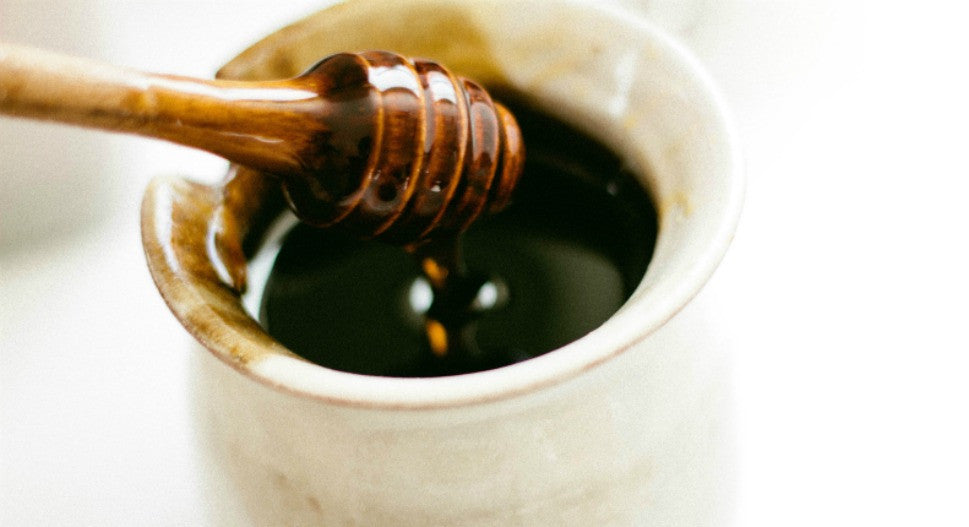
7. AGAVE SYRUP IS BETTER FOR YOU THAN SUGAR
The Agave syrup sold today is made by treating the sugars with heat and enzymes, which destroys all the beneficial health effects of the Agave plant.
Agave syrup is low in glucose and therefore doesn’t spike blood sugar levels much as sugar. However, Agave syrup is about 85% fructose, which is much higher than sugar. Although both glucose and fructose look very similar, they have completely different effects in the body. Whereas every cell in the human body can metabolise glucose, the liver is the only organ that can metabolise fructose in significant amounts.
When the liver gets overloaded with fructose it starts turning the fructose into fat, which in the long term results you getting a fatty liver. So whilst fructose doesn’t raise blood sugar levels in the short-term, it can contribute to insulin resistance when consumed in large amounts in the long term.
Keep in mind that while fruit also has fructose none of this applies to whole fruits, which are loaded with fibre. We are well equipped to handle the small amounts of fructose found in fruit as long as we are eat it in moderation.

8. RAW FOODS HAVE MORE NUTRIENTS
While some food may be best eaten raw, that’s not the case for all foods. Consuming an all-raw diet may rob you of important vitamins and minerals.
The idea behind a raw diet is that heating food destroys its nutrients and natural enzymes, which is bad because enzymes boost digestion and fight chronic disease. This may be true for some foods, however for other foods like tomatoes for example, cooking improves the bioavailability of lycopenes (cancer fighting agents).
So what seems to matter the most is the way you cook you food. Green vegetables tend to hold onto their nutrients best when they are steamed. Boiling tends to lead to a loss of nutrients. By and large cooking at especially high temperatures destroys naturally occurring enzymes and increases the risk of oxidations of fats (if cooking with oil). Some foods like garlic are best eaten chopped and raw. Chopping garlic, then allowing it to sit for a few minutes, activates allicin, one of the key components responsible for garlic’s many health benefits.
Like this? Check out our review of the latest detox diets >























